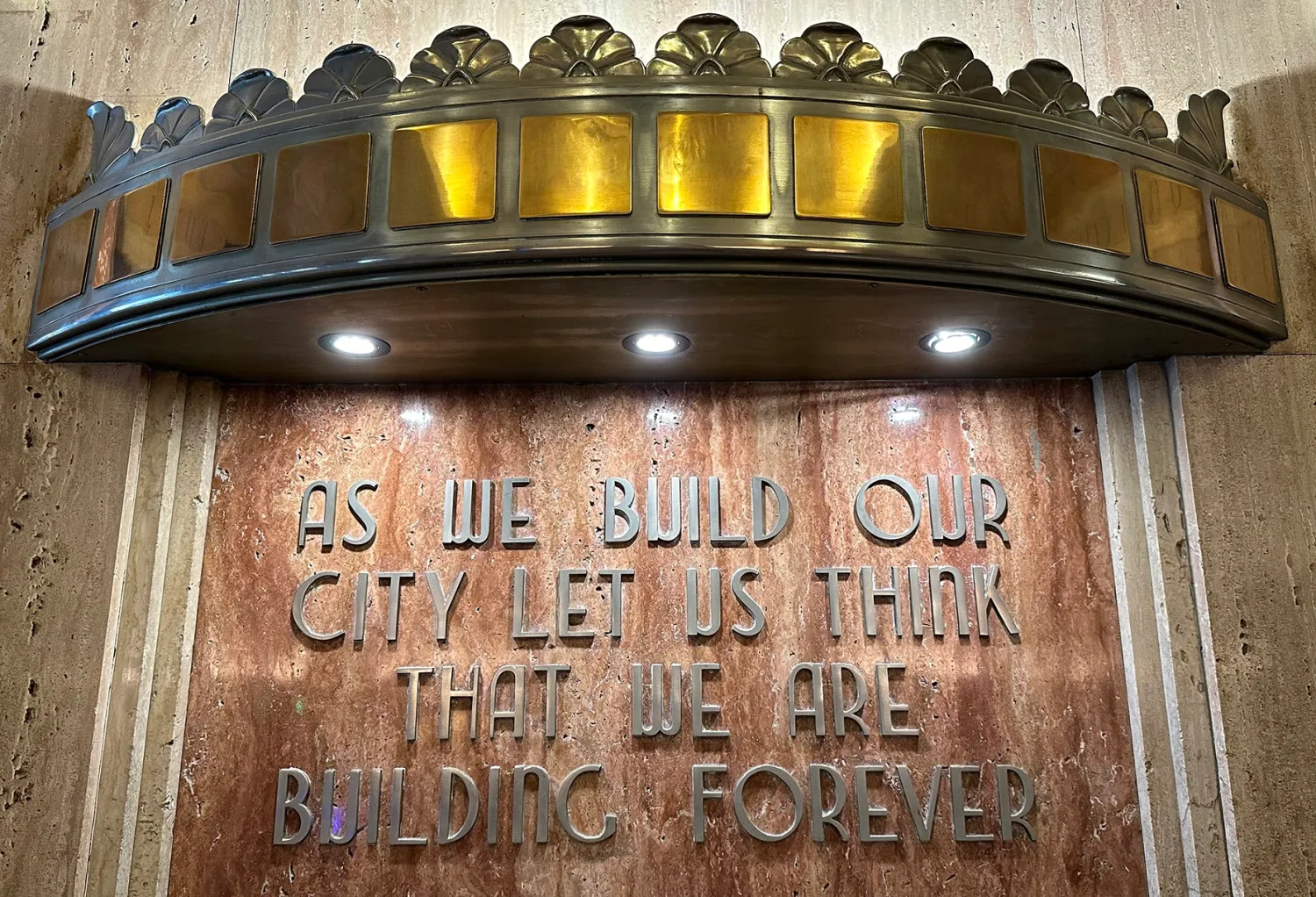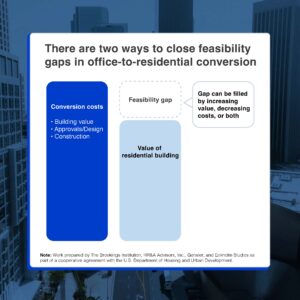on Apr 09, 2025
New Study Offers Data-Driven Approach for Office-to-Housing Conversions

New Study Offers Data-Driven Approach for Office-to-Housing Conversions
Press release issued by Gensler, Brookings Metro, and HR&A Advisors.
As American cities grapple with persistently high office vacancies and an escalating housing crisis, a new report provides critical insights into the potential for converting office buildings into residential spaces. “Understanding Office-to-Residential Conversion: Lessons from Six U.S. Case Studies” examines conversion activity in Houston, Los Angeles, Pittsburgh, St. Louis, Stamford, and Winston-Salem, offering a roadmap for policymakers and developers navigating this complex process.
This research—produced by Brookings Metro, Gensler, HRA Advisors, and Cara Eckholm Studio, with support from the U.S. Department of Housing and Urban Development (HUD) —provides a data-driven framework to help cities optimize office-to-residential (O2R) policy and practice.
The report finds that office-to-residential conversions present a strategic opportunity to tackle three pressing urban issues:
-
- Unmet housing demand: Cities like Los Angeles face a critical shortage of housing, particularly for lower-income households.
- Office market distress: Many downtowns, such as Pittsburgh’s, are struggling to repurpose aging office stock as tenant needs evolve, putting pressure on local tax revenues.
- Downtown vibrancy: Many cities are seeing weekly visits at less than 50% of pre-pandemic levels, resulting in small businesses struggling and downtowns feeling empty.
While some cities have seen organic conversion activity in high-demand housing markets, the report emphasizes that in many cases, local policy and financial incentives are essential to making projects viable.

“Our research on downtown areas across the country shows that the most successful urban cores serve multiple purposes and attract diverse groups of people throughout the day and week,” said Jon Meyers, HR&A Partner. “Converting empty office space for new uses presents a strong opportunity to help downtowns thrive as economic engines for their cities and regions. Our study highlights various strategies that are already working in different cities, and we invite local leaders to use these insights to help identify their priorities, recognize opportunities in their communities, and implement the right tools to achieve their goals.”“Too often, policy discussions around office-to-residential conversions focus on politics rather than the real data needed to make informed decisions,” said Steven Paynter, Principal at Gensler. “This study is different. We conducted in-depth research on both the physical realities of downtown buildings and the financial feasibility of conversions. Our approach is grounded in facts—real data, real buildings, and real economic conditions—so that cities can craft policies that actually work in the real world.”
Through a combination of market analysis, stakeholder interviews, and architectural feasibility assessments, the study identifies four key levers that cities can use to facilitate office-to-residential conversions:
-
- Regulatory flexibility: Zoning and building code reforms, such as allowing conversions by-right, help to accelerate projects.
- Financial incentives: Tools like tax abatements, historic preservation credits, and low-cost financing help bridge the feasibility gap.
- Demand-driven strategies: Investments in public space, transit, and amenities can boost residential appeal in former office corridors.
- Targeted subsidies: Inclusionary zoning or direct subsidies can ensure conversions also advance affordability and equity goals.
“Every city is distinct, but by drawing insights from a diverse set of cities across the country, we’ve found common lessons and strategies,” said Kate Collignon, HR&A Partner. “Office-to-residential conversions can be a powerful tool to support broader downtown activation strategies, and the feasibility of these conversions correlates strongly with the demand for residences downtown. The more desirable we make downtown as a place where people want to live and build community, the greater the opportunity for repurposing the buildings that frame that place.”
The study underscores that there is no one-size-fits-all solution—effective strategies must be tailored to each city’s fiscal structure, real estate market, and regulatory environment. Looking ahead, further research will explore the long-term scalability of O2R conversions and their potential to enhance urban resilience and economic recovery.
“Office to residential conversions feel like a way to solve two problems with one solution – but what we learned from these case studies is that across cities there are differing motivations, goals, and thus policy levers that it makes sense to pull on,” said Tracy Hadden Loh, Fellow at Brookings Metro.
About the Study
- This report is based on qualitative and quantitative research conducted between June and October 2024. The research team conducted interviews with public- and private-sector leaders, analyzed commercial real estate trends using CoStar data, and evaluated the architectural feasibility of conversions using Gensler’s O2R conversion algorithm.
About the Research Partners
About Gensler:
At Gensler, the value of our work stems from its positive impact on the human experience. We are a dynamic and collaborative design firm uniting creativity, research, and innovation to solve complex problems for our clients. Our work challenges conventional ideas about architecture and the built environment. We aren’t just designing buildings — we are reimagining cities and places that make a difference in people’s lives. Founded in 1965, Gensler has built a team of 6,000 professionals who partner with clients in over 100 countries each year. Everything we do is guided by our mission: to create a better world through the power of design.
About Brookings Metro:
Brookings Metro is the nation’s leading source of ideas and action to create more prosperous, just, and resilient communities. In pursuit of our mission to collaborate with local leaders to transform original insights into policy and practical solutions that scale nationally, we produce trusted, actionable research; apply it through regional engagements and national networks; and connect with policymakers at all levels to inform impact at scale. Using our world-class communications platform, we share stories of change and progress that can inform and inspire impact at scale.
About HR&A Advisors:
HR&A Advisors, Inc. (HR&A) is an employee-owned company advising visionary clients on how to create vital places, build equitable and resilient communities, and improve people’s lives.This research was supported by the U.S. Department of Housing and Urban Development (HUD) under a cooperative agreement.
Photo: Brookings Institute